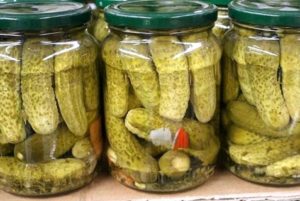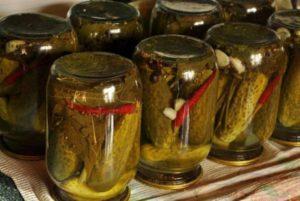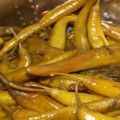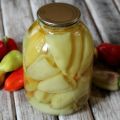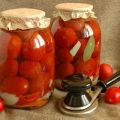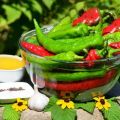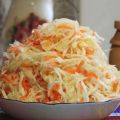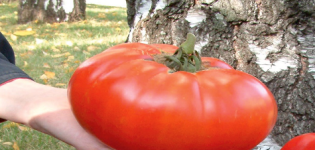6 easy recipes for instant pickled peppers for the winter
In August, when a lot of bell peppers appear on the shelves and in the garden plots, as a rule, there is not enough time for spinning. That is why housewives are trying to find recipes for proven blanks so that preservation is, if possible, not very troublesome and with available ingredients. How to prepare instant pickled sweet peppers, we will describe below.
Features of pickling instant peppers for the winter
This Bulgarian pepper is truly versatile, because it can be prepared as a snack, or it can be used as an addition to various dishes. It is good as part of other dishes as a basis for the preparation of stuffed dishes.
When planning preparation for the winter in the form of canned vegetables, you need to know some subtleties. So what makes our favorite sweet vegetable different? Let's list its features:
- perfectly preserves its aroma, juiciness, sufficient elasticity in conservation;
- has a pleasant sour-sweet taste, which is also preserved in conservation;
- contains vitamins that are not completely lost even during hot processing;
- goes well with other vegetables, raw and preserved, and with meat and cereal products;
- stores well, and with simple recipes, it does not take a lot of time when rolling for the winter.
That is why housewives willingly pickle, salt it both separately and in an assortment with other vegetables.
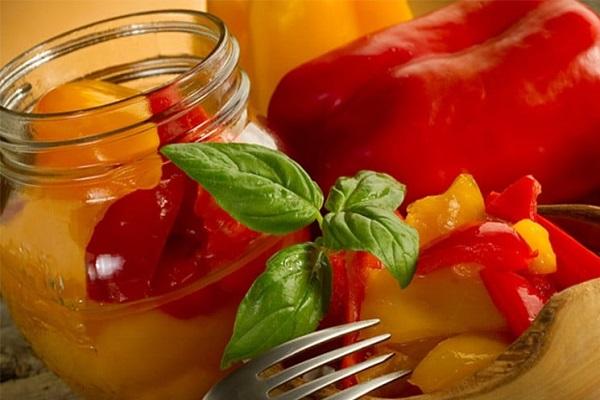
Selection and preparation of products
For preparation for the winter, it is better to choose vegetables during the period of mass harvest, when they have the maximum set of useful elements and vitamins, and at the moment of the greatest ripeness, when they have accumulated enough sugars. If they are purchased, then you should choose depending on the type of workpiece.
So, for preparing, say, a dressing for borscht, thin-walled and slightly juicy pepper is ideal - it has less juiciness, but it has a more pronounced aroma. Small even peppercorns are suitable for freezing for subsequent stuffing. But if you are planning to make a pickled appetizer, then you will not find anything more delicious than a thick-walled, dense and juicy fruit.
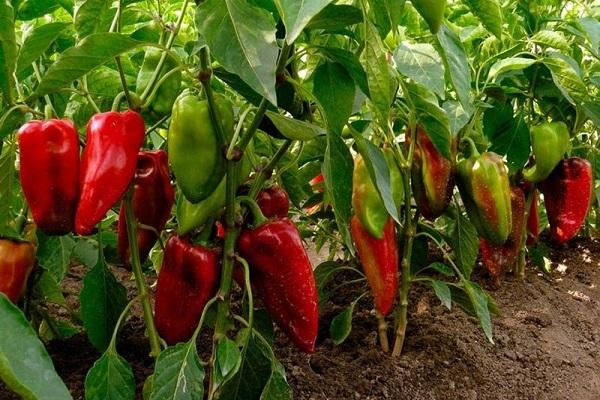
Important! The thicker the walls, the larger the vegetable, the sweeter, juicier, tastier it will be in the finished pickled form.
The preparation is the simplest:
- Rinse;
- air dry or wipe with napkins;
- remove the seed box, after which it is no longer necessary to rinse the vegetables;
- cut as needed.
The less time passes from the moment of removal from the bush, the better. Ideally pluck and cook the same day.
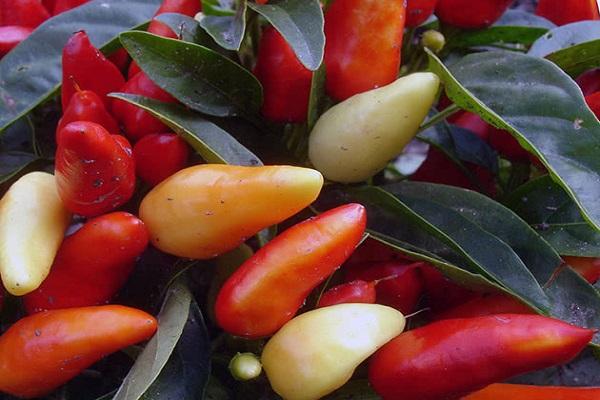
How to prepare containers?
Even if you cook the fastest pickled peppers, you should pay maximum attention to the cleanliness of the dishes and the processing of other containers. Especially if the recipe does not include food sterilization. Sterilize jars (you can in the oven or in the microwave), boil the lids, keep cutting boards and the necessary equipment clean.
How to make quick pickled peppers?
This collection contains the most simple quick pepper recipes. In haste, as they say.
Simple recipe
Products:
- 3 kg of pepper (weight already peeled and cut into longitudinal petals);
- for the marinade - 1 liter of water, 1 table. spoon of coarse salt, 3 tablespoons. tablespoons of granulated sugar;
- a handful of allspice, a few clove buds;
- table vinegar 9 percent.
Preparation:
- Place the peppers in a large bowl or cup.
- Pour boiling water over, cover slightly, leave until softened.
- Boil the marinade: water, spices, sugar and salt.
- Get the pepper, put it in jars, pour the marinade into them.
- Pour vinegar into the jars at the rate of 1 tbsp. spoon for half a liter of workpiece.
- Roll up, leave wrapped for an hour. You can store the preservation at room temperature.
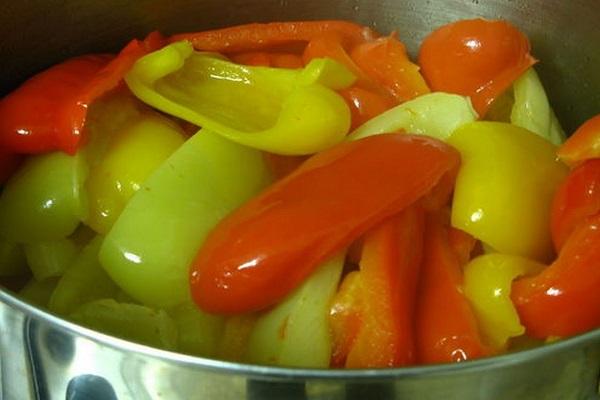
With garlic and parsley
A fantastically delicious and aromatic recipe with the perfect blend of herbs and garlic.
Products for 8 half-liter cans:
- 3 kg of pepper;
- 1.5 liters of water;
- a pound of sugar (if you don't like a very sweet marinade, you can reduce it if you like);
- 0.5 l of table vinegar;
- 4 tbsp. tablespoons of vegetable oil (you can not add it, the oil does not greatly affect the taste of the product);
- 2-3 st. spoons of rock salt;
- 2 heads of garlic;
- 2 bunches of parsley.
Preparation:
- Cut the main vegetable into strips (ideally goes into a jar, cut lengthwise into 4-6 parts).
- Chop the garlic coarsely, chop the herbs.
- In a large saucepan, boil the marinade: water, vinegar, oil, sugar and salt.
- Transfer the pepper to the marinade (at first it will seem a lot, but it will settle quickly), when it boils, boil for 4-5 minutes so that the pepper is hard enough, not boiled.
- Put in jars, sprinkling with garlic and herbs at random.
- Pour marinade to the brim, roll up.
- Turn over, wrap up.

Sweet peppers without sterilization
Another recipe for a quick pepper in vinegar filling, a complete absence of salt and no sterilization.
Products:
- 1 kg of pepper, prepared and cut into small boats;
- 100 g of table vinegar and clarified vegetable oil;
- half a glass of sugar.
Cooking like this:
- Boil the marinade from water, oil, vinegar and sugar.
- Put chopped vegetables in it, boil for 5-7 minutes.
- Put vegetables in sterilized jars, pour marinade.
- Roll up the lids and place the jars, turning them upside down.
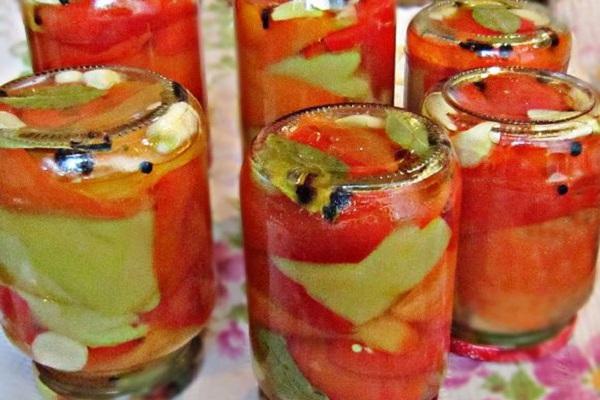
With onions, carrots and butter
You can quickly pickle Bulgarian pepper in the form of a salad. We take 1 kg of peeled pepper:
- 1 kg of carrots;
- 1 kg of onions;
- 200 g of clarified vegetable oil;
- 1 tbsp. l. salt;
- 4 tbsp. l. Sahara;
- a half-liter can of ready-made tomato sauce or 200 g of tomato paste;
- 50 g of table vinegar.
Preparation:
- Cut the carrots into strips, onion half rings.
- Fold in a saucepan and pour over 1 cup boiling water. Leave to simmer over low heat.
- At this time, cut the pepper into large strips. Put in a saucepan, pour in oil, add salt and sugar, pour in sauce.
- While stirring, boil over low heat for a quarter of an hour.
- Toward the end, add vinegar and boil again.
- Sterilize the jars, spread the mixture over them, roll up the lids, turn over until cool.
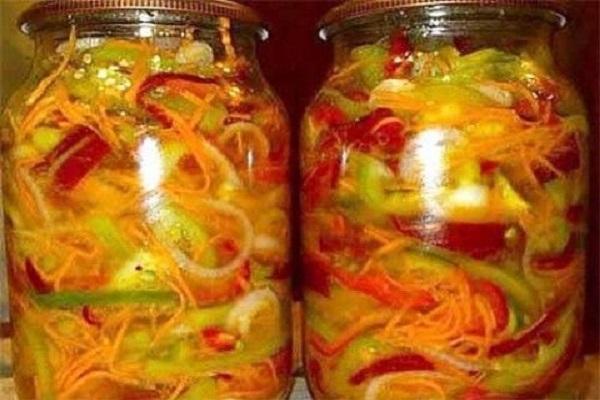
In Italian
There is sterilization in this recipe, but with a certain skill, such a blank is prepared anyway quickly.
We take as much pepper as there is, the remaining ingredients are calculated based on the consumption of a 0.5-liter jar.
So, we need:
- a couple of cloves of garlic;
- a couple of sprigs of parsley, basil, fresh garden mint;
- a third of hot pepper;
- a quarter of a small spoonful of sea salt;
- half a teaspoon of apple cider vinegar;
- oil to fill the jar.
Cooking like this:
- Cut the bell pepper into quarters, put on a baking sheet and, season with salt, sprinkle a little with olive or sunflower oil.
- Bake in a hot (200 degrees) oven for 20 minutes.
- Chop the greens.
- Cut the garlic into slices.
- Grind the chili.
- Put a little greens, chili, garlic in a calcined jar, add half of hot pepper and put seasonings again. Top with pepper and sprinkle with seasonings again.
- Add salt (it is good to take sea salt), add vinegar. Gently tamp the contents and pour in oil so that the vegetables are covered and there are no voids in the jar.
- Place the lids on top and place in a water bath for sterilization for 7 minutes. Timing - for a half-liter can!
- Take out the cans and roll up, turn over and leave to cool under the covers.

In honey-vinegar marinade
The pungent, pungent taste goes well with honey sweetness. Pouring is designed to cook three kilograms of pepper. It is done like this:
- 1 liter of water;
- a couple of large tablespoons of granulated sugar and coarse salt;
- 4.5 table. tablespoons of vinegar;
- half a glass of butter;
- 4 tablespoons of honey.
Working process:
- Slice the peppers longitudinally into long strips.
- Cook a classic marinade, put pepper blanks in it for a few minutes. While everything is cooking, mix gently.
- At the very end, pour vinegar and, stirring, transfer to jars. Top up the marinade. Close, turn and place a blanket on top.
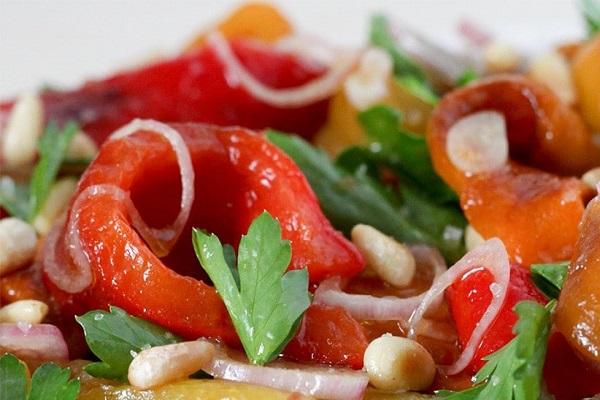
How to store workpieces correctly?
Usually pickled blanks do not need special storage - a closet in the room will do. Jars of pepper are no problem if they have been sterilized or boiled well before seaming. Only what has not been fully cooked is stored in the refrigerator.
